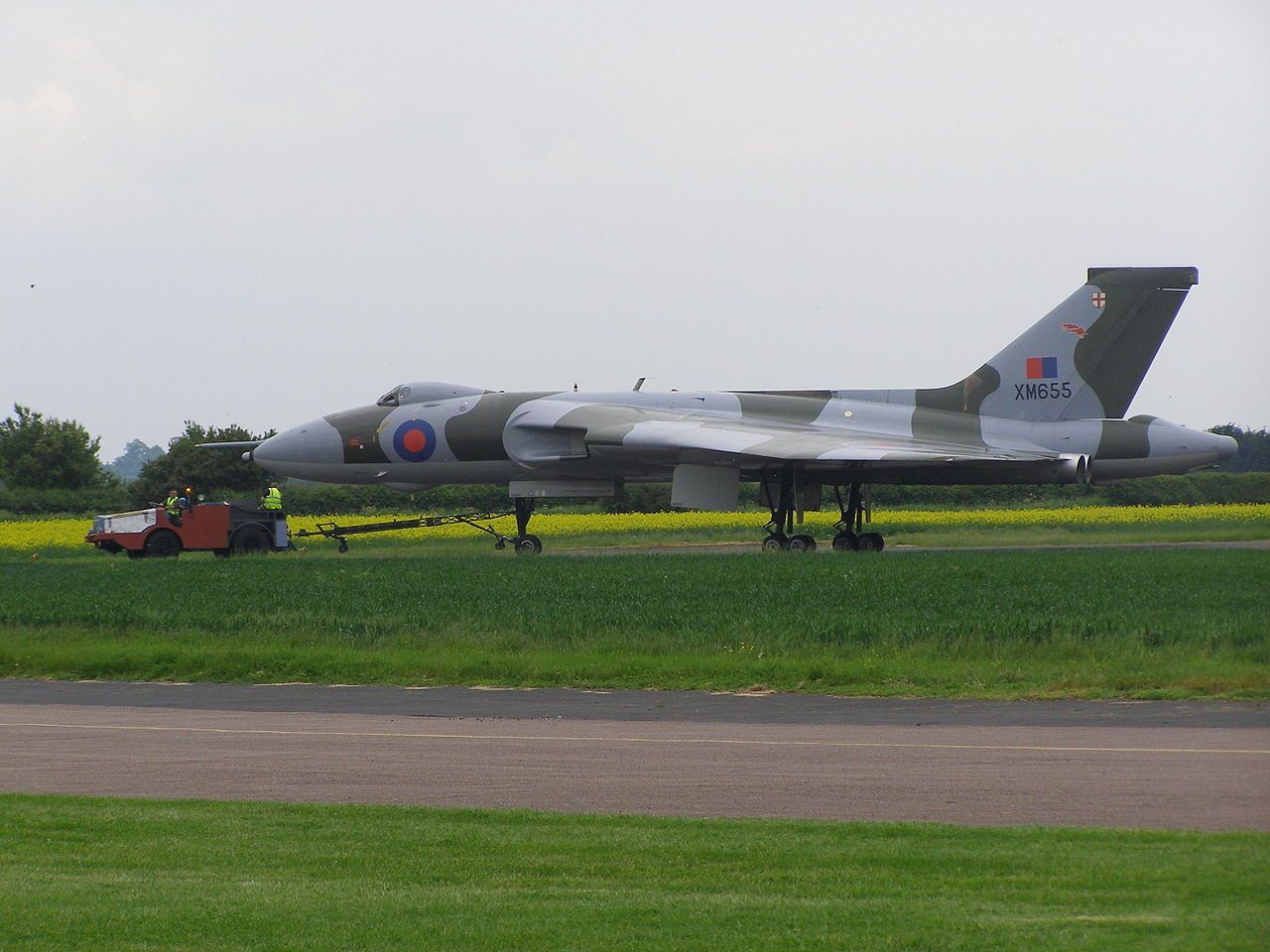A Vulcan aircraft overshot a runway in England on Saturday during a high-speed taxi maneuver, narrowly missing a local road. While the aircraft was largely undamaged, the road was closed by police as a precaution. The bomber involved in the incident is one of few Vulcans that, although not airworthy, is still able to taxi while on the ground.
A surprising turn of events
The aircraft is looked after by the XM655 Maintenance and Preservation Society, with the aircraft undergoing engine ground runs approximately every three months, together with slow taxi runs, to ensure the steering and braking systems are functional.
However, while the aircraft regularly taxis, it doesn’t normally end up overshooting the runway, and the event has caused widespread bemusement and shock. One local resident took to Twitter stating: “Not every day you see a Vulcan Bomber overshoots the runway and missing the road, on your way home #luckymiss.”
While the aircraft does not appear to have been badly damaged and has been towed back onto the tarmac, it will now undergo a series of inspections and repairs. The incident was reportedly caused due to a fault with a piece of cockpit equipment.
XM655 Maintenance and Preservation Society said on Facebook that:
“Due to a malfunction of a piece of equipment in the cockpit, the aircraft remained at full power for approximately two seconds longer than intended.”
The story of XM655
XM655 is an Avro Vulcan B Mk2, the youngest Vulcan in existence and the third to last produced. The aircraft was delivered to 9 squadron at RAF Cottesmore in November 1964; it was then transferred to the Waddington Wing in January 1968. Later the aircraft served with 101 and 44 squadrons, and was with 50 squadron when put up for disposal in late 1983.
While there are other Vulcans that still have the ability to taxi, XM655 is the only one with the most powerful of the engine variants, the Bristol Olympus 301s and 655MaPS.
The Vulcan
The Vulcan bombers were part of the UK’s V-force during the cold war, a set of high-altitude aircraft which were designed to carry Britain’sBritain’s nuclear deterrent. The Vulcan’s sister aircraft were the Victor and the Valiant.
A Vulcan was used during the famous ‘‘Black bull’’ mission undertaken by the Royal Air Force during the Falklands War.
Following the invasion of the Falklands islands by Argentina in 1982, the UK government looked at ways of limiting Argentine air power ahead of a British task force’s arrival. They decided to target the runway of the island’s main airstrip in an audacious mission which would see two Vulcans fly over 6000 miles (12,000km).
However, the Vulcan was designed for medium-range runs, not long-range flights, and because of this, it would need to be refueled multiple times on the trip. In an impressive feat of logistics, the two Vulcans were accompanied by 11 air-to-air tankers, which refueled each other before peeling away. Eventually, just one Vulcan was left, which delivered its payload putting the airport’s runway out of use.
Do you have a favorite story about the Vulcan? Let us know in the comments below.

